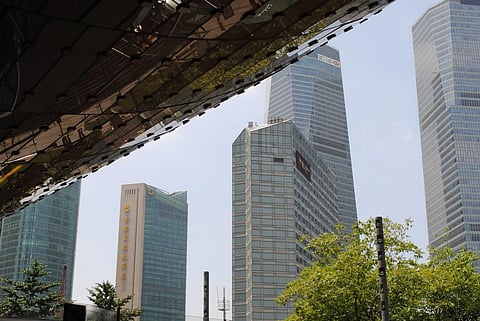Why smart cities need energy-efficient and sustainable buildings
Energy has been, since the start of the Industrial Revolution, at the centre stage when it came to the development and growth of countries.
Countries have not only been exploring alternative renewable resources of energy but also developing technologies, inventing processes and equipment that consume energy efficiently and do not compromise on performance.
The United Nations has also placed access to energy and efficiency under Sustainable Development Goals (SDG), urging governments to sync their policies and programmes for sustainable energy consumption.
In June 2015, the Government of India launched the Smart Cities Mission to develop our cities on sustainability and inclusivity of processes and systems of a prototypical city.
A smart city is one that provides core infrastructure and quality of life to its citizens with a clean and sustainable environment. A smart city is driven by smart devices, machines and methods and includes energy conservation and efficiency processes as well.
Assessment of our cities and their sustainability on energy consumption needs to be analysed from several perspectives.
Energy efficiency, in addition to the generation of energy from several sources, is one of the critical aspects to provide energy access to a vast population of our country. Energy demand patterns are complex and distinct for different countries.
The building sector, for instance, is one of the most dominant sectors accounting for 40 per cent of the primary energy requirement of a developed country (European Union Report). Out of this, 40-50 per cent goes into driving the technologies, equipment and processes to make ambient life inside buildings conducive.
Inability to access energy sometimes forces countries to go volatile and default on their payments. India’s energy dependence on fossil fuels, for example, resulted in the loss of foreign exchange reserves in 1991.
India is currently attempting all possible mechanisms to deliver a five-trillion economy by 2024-25 and requires a harmonious and sustained real gross domestic product growth rate of 8 per cent.
Rise in demand
Energy demand is going to rise in India with an added push for economic growth and urbanisation. Compulsion in the form of economic growth necessitates extensive use of energy for development and constraints due to restricted choices of energy resources that are environment-friendly under the climate change compulsions of the Paris Agreement, 2015.
There is a famous law of energy conservation: Energy can neither be created nor destroyed, it can only be transformed. So utilising energy in smart cities efficiently is necessary and critical. It requires the sustainability of buildings and cities.
India has 34 per cent urbanised population with a growth rate of 31.8 per cent in the last decade, according to the UN World Urbanization Prospects Report 2018. This rapid increase in urban population has led slums clusters to mushroom and aggravated poor standards of living, pollution, as well as illegal and unsustainable energy-consuming buildings.
International Energy Agency (IEA) reported that India’s energy demand was higher than the global demand growth in 2018. China, the United States and India together accounted for approximately 70 per cent of the rise in energy demand. This will keep increasing.
Thus, other dimensions related to clean energy and efficient energy management need to be optimised. But policymakers and stakeholders face challenges on how to ensure sustainable energy conservation in buildings and cities.
The Union Ministry of Housing and Urban Affairs recently released the “Ease of Living Index” to help cities evaluate their liveability condition on numerous parameters. The Union Ministry of Power introduced ECO Niwas Samhita 2018, an Energy Conservation Building Code for Residential Buildings to shift and promote energy efficiency in the residential buildings.
The Energy Conservation Act, 2001 provides a regulatory framework for establishing standards and labelling of processes, equipment and appliances. Under this Act, the Bureau of Energy Efficiency has conscripted several energy efficiency steps in household lighting standards and in industrial buildings.
BEE is entrusted to anchor the standards and labelling of appliances and demand-side administration of agriculture and municipalities. The aforementioned development and efforts need to be extended to rural and second-tier cities as well. The public needs to be made aware of the conservation of energy in a fashion as has been done for Swachh Bharat Mission.
People’s participation and cooperation are important to improve the lifestyle patterns of energy consumption in buildings. We need to transform building development process (material used, processes undertaken), incorporate sustainable and green building design practices and monitor and maintain building energy consumption.
Data analytics and predictive modelling can be applied to obtain data from monitoring and maintenance documentation. Adoption of sustainable lifestyle patterns and creating awareness about sustainable building practices will be a significant step towards conserving energy.
Real estate regulation authorities should take into account the building designs and structural attributes while passing building development plans. They should lay appropriate guidelines as well.
Citizens need to understand that their activities can greatly optimise energy consumption to make buildings energy-efficient. Sustainable residential activities and lifestyles practice can significantly help in energy conservation.
With the rapid economic growth on target and a rise in urbanisation and energy demand, it is essential for all stakeholders to develop and participate in sustainable policy for the building sector.
Views expressed are the author’s own and don’t necessarily reflect those of Down To Earth

